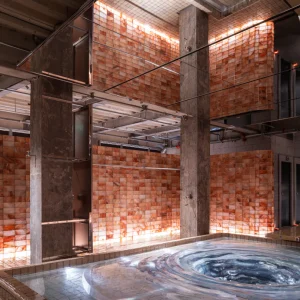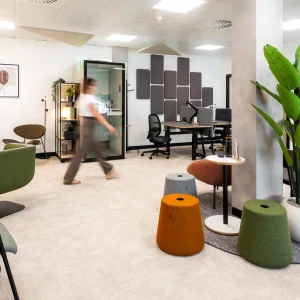The new Dunbar will replace a virtually windowless, 1970s-vintage hexagon-and-high-rise on New Jersey Avenue NW. The new Dunbar is distinct for its campus-like setting, atriums and abundant natural light.
The winning designers – the team of Ehrenkrantz, Eckstut & Kuhn Architects-Engineers and Moody-Nolan Architects – stated that they have tried to pay homage to the original school named for the poet Paul Laurence Dunbar. The new school building will include a spacious central lobby, with an image of Dunbar, and selections from his verse.
The new Dunbar will be constructed beside the old one. The school’s $3 million athletic field, installed in 2007, will not be torn up. The new design is considered by many as a generic take on retro-modern, aping the basic outlines of early-20th-century institutional architecture that is commonly seen all over the city. The design can be categorized neither as traditional nor as contemporary.
Ehrenkrantz, Eckstut & Kuhn Architects-Engineers and Moody-Nolan Architects team has designed the new school building oriented to its playing fields. The scheme is dominated by a gigantic gymnasium. Learning will take place in ‘academic neighbourhoods’ off to one side of the structure. A pool, auditorium and central ‘armory’, which are aimed to provide architectural focus are some other notable features of the new Dunbar.
The city solicited designs from 17 architecture firms to design the new home of Dunbar High School. It has cut down the list to four teams, including some with substantial international reputations such as London-based architects, Norman Foster and David Adjaye.





